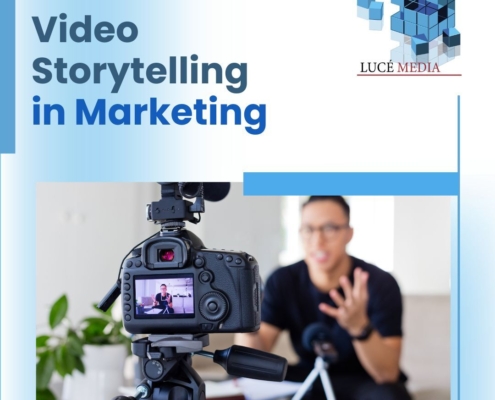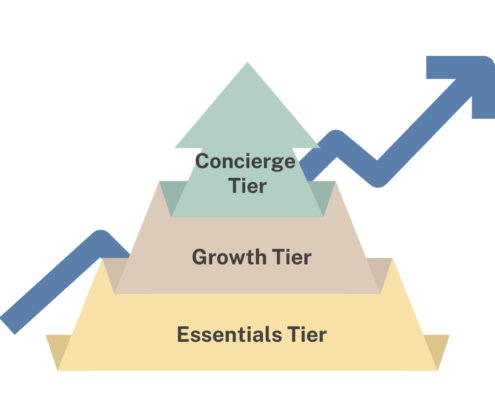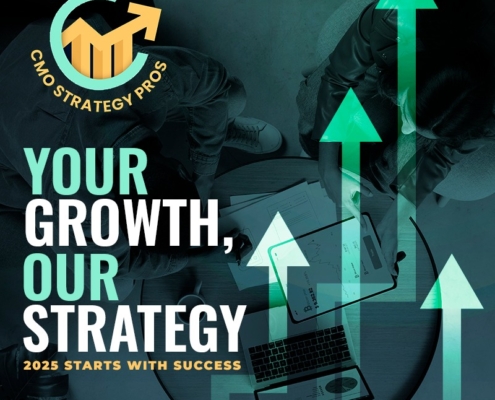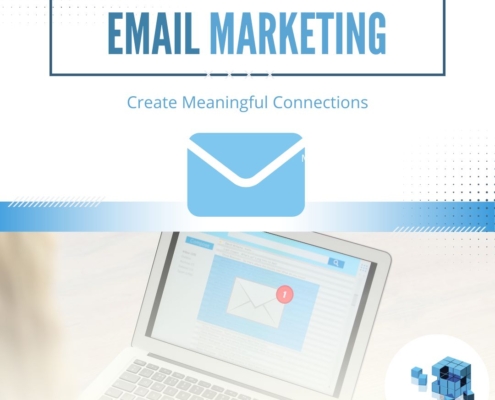
Welcome to Lucé Media – Social Media Strategy and Metrics
Welcome to Lucé Media. We are glad you stopped by.
Lucé Media is a collective of some of the best digital, social, video and innovation talent around. I hope you had a chance to read about our group on the Our Team page. Our company,…

Why Custom AI Solutions Are Your Business’s Next Revenue-Generating Powerhouse
The Future of Business Growth Lies in Custom AI Solutions
Success in today's challenging business world requires creativity and the use of customized AI solutions to drive innovation. By implementing AI tailored to your specific needs, businesses…

10 Effective Strategies for High-Quality Lead Generation
In today’s competitive market, lead generation is very important for growing a business. But not all leads are the same. It is key to generate quality leads that truly care about what you offer. This helps build a strong sales funnel. This…

How To Embrace AI-Driven Marketing – Plus 3 Crucial Things Not To Do
Major shifts in consumer expectations have made AI-driven marketing a critical asset for CEOs, Presidents, and Business Owners. Traditional methods like generic email blasts and guesswork-based campaigns often waste budgets and dilute brand…

Unlock Growth: Luce Media’s Proven Low Cost Marketing Plan
Marketing plans that don’t evolve with your business are a waste of time and money. What you need is a system that adjusts to your growth, not one that locks you into a static set of tactics. The answer? A tiered marketing approach—flexible, scalable, and built to deliver results that actually matter.

Lights, Camera, Strategy: Mastering Video Marketing to Engage and Convert

The Role of a Fractional CMO for Healthcare Industries
Unlocking Growth: The Role of a Fractional CMO for Healthcare Industries
Introduction to the Fractional CMO for Healthcare
A Fractional Chief Marketing Officer (CMO) operates on a part-time or contractual basis, providing strategic marketing…

Tiered Marketing System: A Scalable Solution for Growing Businesses
Marketing plans that don’t evolve with your business are a waste of time and money. What you need is a system that adjusts to your growth, not one that locks you into a static set of tactics. The answer? A tiered marketing approach—flexible, scalable, and built to deliver results that actually matter.

Fractional CMO vs Full-time CMO: Which is the Right Choice for Your Business?
This comprehensive guide will delve into the roles of CMOs, explore the benefits of both Fractional and Full-time arrangements, and provide a step-by-step approach to help you make an informed decision tailored to your business needs.
Read More...

Leveraging a Fractional CMO for Enhanced E-commerce Marketing Success
In this comprehensive guide, explore how a Fractional CMO can revolutionize your e-commerce marketing. Discover the benefits of this strategic solution, offering high-level expertise without the full-time commitment. Read More...

Unlocking Business Growth: The Strategic Advantage of a Fractional CMO
Dentist digital marketing is crucial for building a successful dental practice. With the rise of social media, it has become easier than ever for dentists to reach potential patients and connect with existing ones. Read More...

How to Effectively Utilize Social Media for Dentist Digital Marketing
Dentist digital marketing is crucial for building a successful dental practice. With the rise of social media, it has become easier than ever for dentists to reach potential patients and connect with existing ones. Read More...

Unlocking Success: The Power of Fractional CMOs in Digital Marketing
CMO Fractional stands for Chief Marketing Officer Fractional, and it refers to a part-time, outsourced marketing executive. One of the most notable benefits of hiring a CMO Fractional Digital Marketing Firm is cost-effectiveness. Read More...
How to Measure the Results of Your Digital and Social Media Campaigns
Welcome to our comprehensive guide on measuring the results of your digital and social media campaigns. In today's fast-paced world, understanding how your online efforts are performing is essential for making intelligent marketing decisions. Read More...

Fractional Marketing: The Smart Strategy for CMOs to Amplify Impact with Limited Resources
In this article, we'll explore how fractional marketing can maximize impact for CMOs, even with limited resources. Read More...

The Rise of Fractional CMOs
In the dynamic digital marketing landscape, small businesses are undergoing a profound transformation, and at the forefront of this change are Fractional Chief Marketing Officers (CMOs). Read More...

Reasons You Need a Digital Marketing Agency in Texas
As a business owner, you understand the importance of having a strong online presence. With the rise of digital marketing, it's essential to have a strategy in place to reach your target audience and drive sales. Read more...

The Power of Email Marketing for Dentists
Email marketing is a powerful tool for dentists looking to increase their patient base and grow their practice. As a form of digital marketing, it allows dentists to reach a wider audience and target specific demographics with tailored messaging. Read More...

How to Utilize Digital Marketing Strategies to Grow Your Business in Texas
In the ever-evolving realm of contemporary business, digital marketing has emerged as a fundamental tool for companies striving to expand their horizons and achieve unparalleled success.

Mastering Video Marketing: Unleashing the Power of Engaging and Informative Video Content
In today's digital age, video marketing has emerged as a powerful tool for businesses to connect with their target audiences. With the rise of platforms like YouTube, Instagram, and TikTok, video content has become increasingly popular and influential. Read More...

Tips for Creating a Successful Online Presence for Dentists
In today's digital age, video marketing has emerged as a powerful tool for businesses to connect with their target audiences. With the rise of platforms like YouTube, Instagram, and TikTok, video content has become increasingly popular and influential. Read More...

